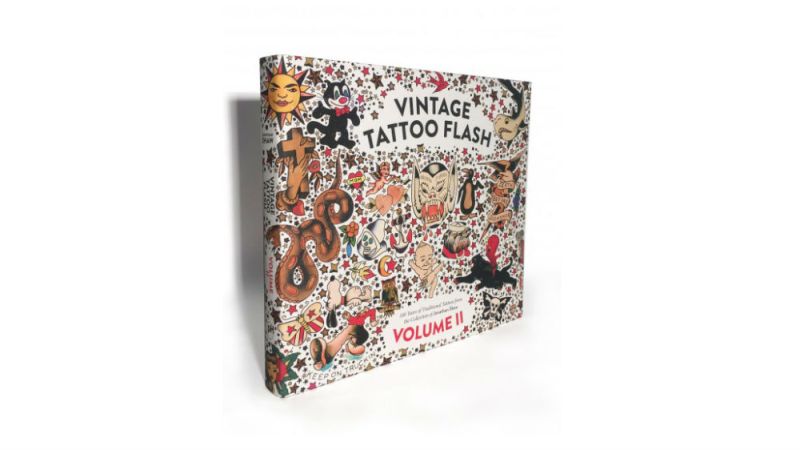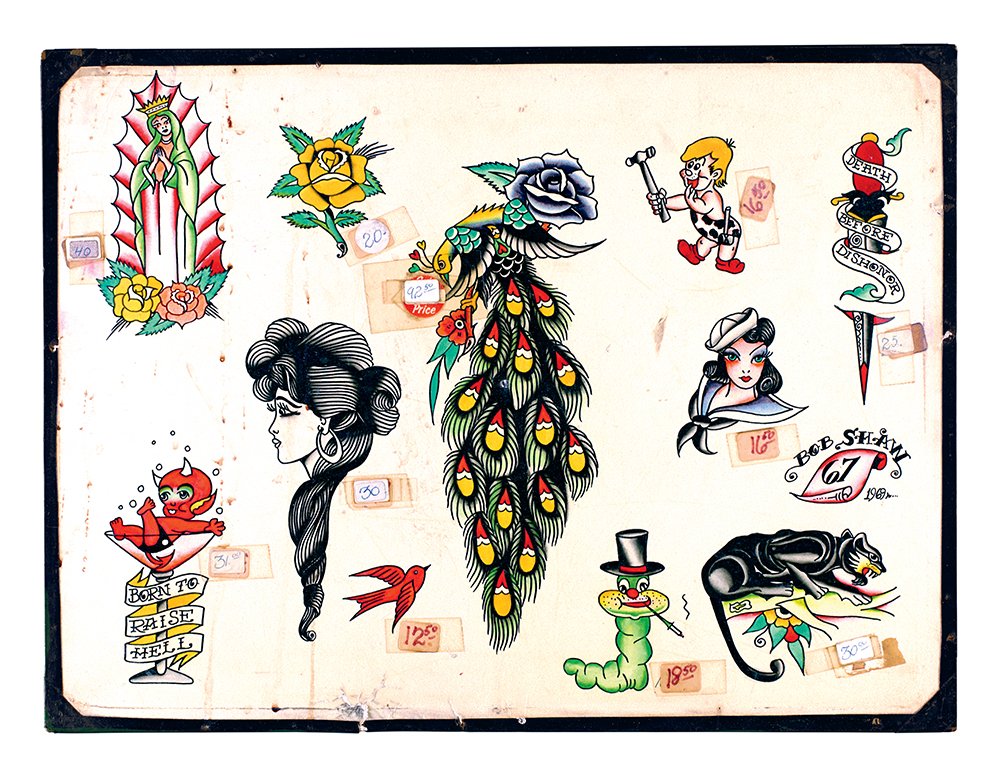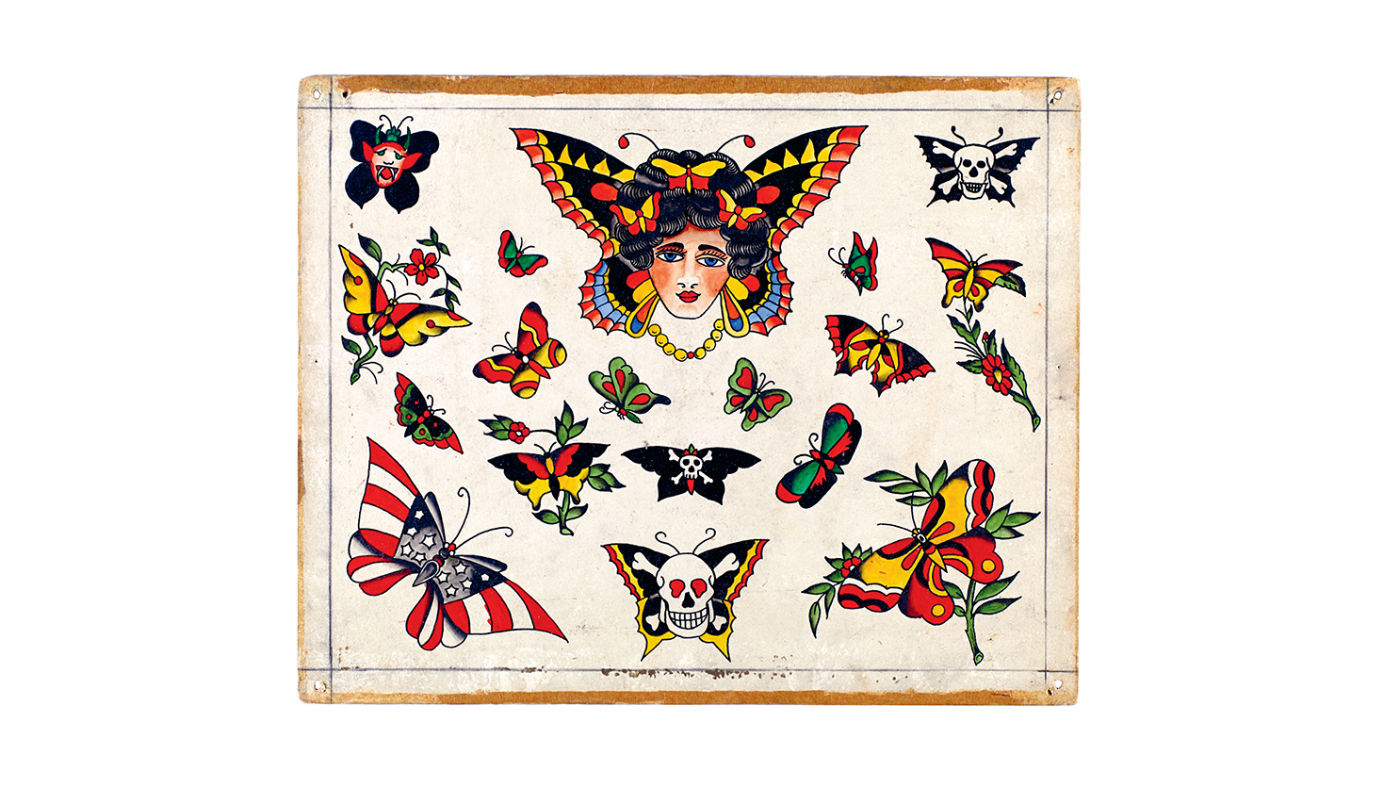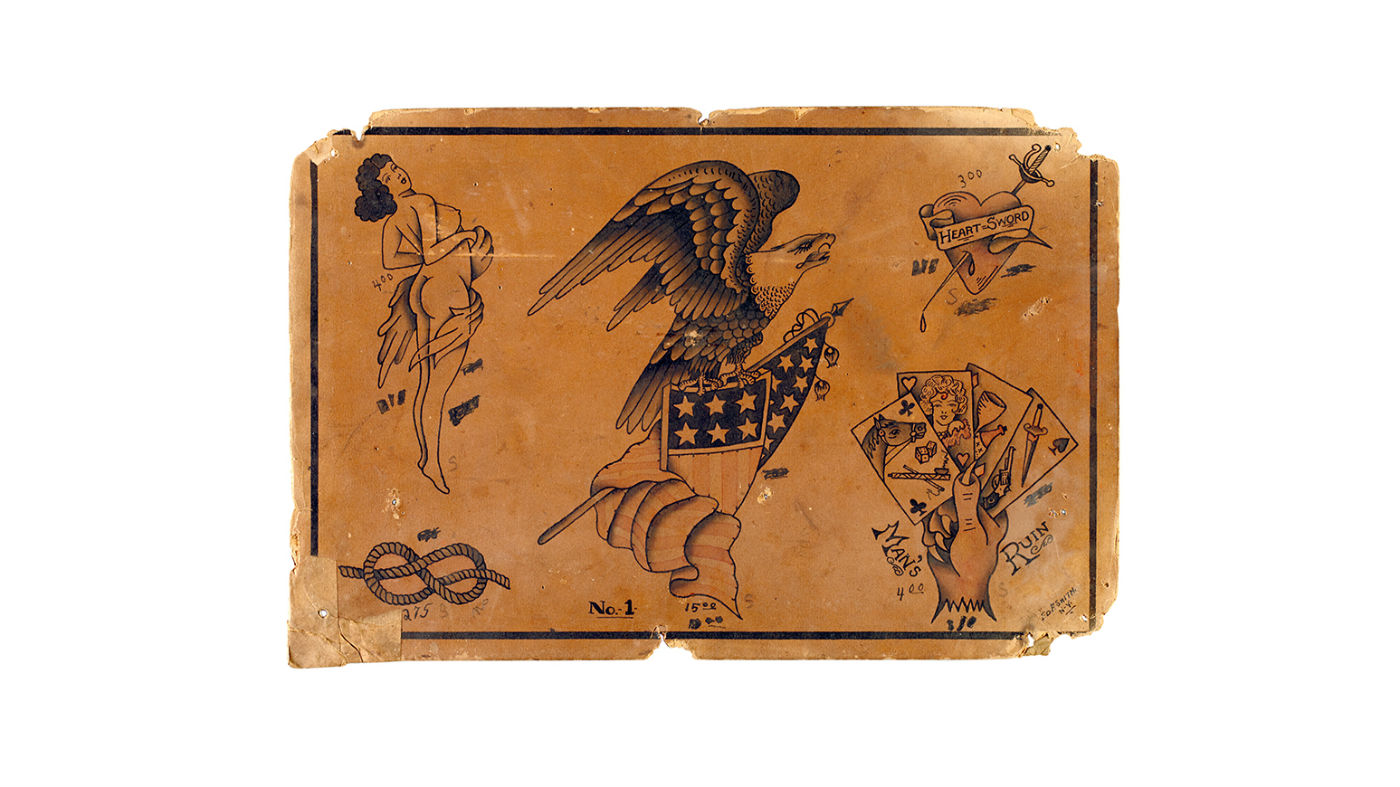Not all tattoos are fine art. Many are not art at all, and are quite the opposite. But not all paintings, sculptures, sketches, or video installations are fine art, either. What qualifies one tattoo, one painting, or one statue as a successful artistic endeavor, and what relegates another to classifications — from tawdry to trite to simply no good — is often in the eye of the beholder. There is that almost impossible to define, yet undeniable quality, that the late author Robert Pirsig almost went mad in trying to isolate, the quality of, well … quality.

In the pages of Vintage Tattoo Flash: Volume II (Power House Books, October 2017), the reader finds hundreds of samples of 20th century tattoo art. The term “tattoo flash” refers to the images commonly pasted on the walls of a tattoo parlor from which a potential customer can search for designs he or she wants to have inked onto their skin. Tattoo flash is largely an ephemeral art form, in that the samples will, in time, be replaced or simply removed (and a tattoo on a person’s body has an end-of-life expiration date). Most tattoo flash, in other words, is lost to the ages.
This book, compiled from the archives of famed tattoo artist and entrepreneur (and magazine founder, occasional actor, writer, arts promoter, felon, etc.) Jonathan Shaw, not only ensures the longtime preservation of hundreds of tattoo flash designs, but elevates flash to the level it deserves. Seen on skin or the walls of a parlor, these graphics are merely tattoos in the eyes of most viewers. Seen in the pages of this oversized coffee table book, they are art.
Well, most of them.
Not all of the images found in this book — or found on the flesh of the people who selected this or that template for permanent installation on their bodies — count as art. The racially stereotyped Chinese infant perched in a small bath, hands plunged below the water in the direction of his nether over a caption reading “I’m Holding My Own” does not belong in the same category as Rodin’s The Burghers of Calais. But a gorgeous, colorful rendering of a skull transfixed upon a dagger with the words “Death Before Dishonor” written out on a scroll wrapped around the tableau does. Why? Because it is rich and it is beautiful. Keep in mind the beauty is not always easy on the eyes; just take a close look at the tortured expressions of the aforementioned Burghers completed back in 1889 if you think beauty is always nice to look at.
Vintage Tattoo Flash: Volume II features countless classic graphics, from the iconic name-over-heart tattoo (often the name is “Mom”) to the naked ladies to the dragons and so forth. It features military and patriotic iconography aplenty. It has religious flash, cartoon flash, nautical flash, and more.
But the book is more than just a catalog of lots of old tattoo designs. It also invites the reader on a trip through nearly a century’s worth of history. Now, in the 21st century, most people don’t bat an eye when they see a tattoo, provided it’s not an overtly sexual, tasteless, or offensive ink job. This was not always the case. In fact, up until the past few decades, people with tattoos — and tattoo artists — were very much part of a subculture, seen as outcasts and degenerates by most members of society. The book features images of people with tattoos from generations in which having ink on the body was a bold act.
Seeing tattoo flash from years gone by alongside those bearing the artwork on their skin brings a further depth to this art form, an art that, until so recently, was nothing more than the deviant hobby of strange people lurking in the darker allies away from the well-lit galleries and salons where art was on display.







